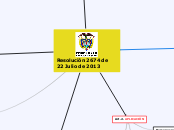GESTIÓN DE LA CALIDAD DE LA EDUCACIÓN UNIVERSITARIA
The Solar System is the gravitationally bound system of the Sun and the objects that orbit it, either directly or indirectly. Of the objects that orbit the Sun directly, the largest are the eight planets, with the remainder being smaller objects, the dwarf planets, and small Solar System bodies.
MEJORA CONTINUA
Nuevas perspectivas
Retos en la calidad
No es estático
MONITOREO
Seguimiento individualizado
EVALUACIÓN DEL DESEMPEÑO
Corregir
Entender
Observar
RECURSOS
Psicológico
Agradable
Positivo
Físico
Infraestructura
PLANIFICACIÓN
Uranus is an oddball. It has clouds made of hydrogen sulfide, the same chemical that makes rotten eggs smell so foul.
It rotates from east to west like Venus. Its tilt causes extreme seasons that last 20-plus years, and the sun beats down on one pole or the other for 84 Earth-years at a time.
Methane in the atmosphere gives Uranus its blue-green tint. It also has 13 sets of faint rings.
Ejecución
Uranus has 27 moons that we know of. Five of the moons are large and the rest are much smaller.
Name these 5 moons.
Diseño
How long does it take for Uranus to go around the sun?
Desarrollo
A planet's day is the time it takes the planet to rotate or spin once on its axis.
Write down Uranus's day measured in Earth days.
Estrategias
LIDERAZGO
Neptune is about the size of Uranus and is known for supersonic strong winds.
Neptune is far out and cold.
The planet is more than 30 times as far from the sun as Earth.
Neptune was the first planet predicted to exist by using math, before it was visually detected. Neptune is about 17 times as massive as Earth and has a rocky core.
Trazar metas
Neptune has thirteen moons that we know of and one more waiting for confirmation.
The largest moon is slightly smaller than Earth's Moon and has active volcanoes which erupt like geysers and eject nitrogen frost over the surface.
Name this moon and at least 4 others.
Promover valores
How long does it take for Neptune to go around the sun?
Actitud motivacional
Alta calidad educativa
A planet's day is the time it takes the planet to rotate or spin once on its axis.
Write down Neptune's day measured in Earth days.
Gestión de equipos directivos
ESTRUCTURA ORGANIZACIONAL
It was once considered a planet but in August 2006 the International Astronomical Union (IAU) downgraded the status of Pluto to that of “dwarf planet.”
Pluto is unlike other planets in many respects. It is smaller than Earth's moon; its orbit is highly elliptical.
It's a cold, rocky world with a tenuous atmosphere. Pluto is a very active ice world that's covered in glaciers, mountains of ice water, icy dunes, and possibly even cryovolcanoes that erupt icy lava made of water, methane or ammonia.
Cumplimiento de funciones
The dwarf planet Pluto has five moons.
Name these moons.
Logro de objetivos
EFICIENCIA
Optimización de recursos
Logro de los resultados
Calidad total
RELEVANCIA
Mars is a cold, desert-like place covered in dust. This dust is made of iron oxides, giving the planet its iconic red hue.
Mars shares similarities with Earth: It is rocky, has mountains, valleys and canyons, and storm systems ranging from localized tornado-like dust devils to planet-engulfing dust storms.
Aprendizaje útil para toda la vida
How long does it take for Mars to go around the sun?
Desarrollo del ser humano
A planet's day is the time it takes the planet to rotate or spin once on its axis.
Write down Mars's day measured in Earth days.
Social
Individual
Valoración al aprendizaje
EFICACIA
Earth is a water world, with two-thirds of the planet covered by oceans.
It's the only world known to harbor life.
Earth's atmosphere is rich in nitrogen and oxygen.
Its name originates from 'Die Erde,' the German word for 'the ground.'
Earth may once have had two moons, nowadays it has just one.
Educación superior eficaz
A planet's day is the time it takes the planet to rotate or spin once on its axis.
Write down the Earth's day in hours.
Vinculación con la sociedad
Difusión de conocimientos
Investigación
Docencia
TRASCENDENCIA
Contribución al desarrollo
Dentro del Sistema Educativo
Internacional
Nacional
PERTINENCIA
Venus is Earth's twin in size and has no moons.
Its surface has various mountains and volcanoes. Because of its thick, toxic atmosphere that's made of sulfuric acid clouds, Venus is an extreme example of the greenhouse effect. The average temperature on Venus' surface is 900 F (465 C).
Venus spins slowly from east to west, the opposite direction to most of the other planets.
The Greeks believed Venus was two different objects — one in the morning sky and another in the evening. Because it is often brighter than any other object in the sky, Venus has generated many UFO reports.
Flexible
Admite cambios
Adaptable
Intereses
Capacidades
Cultura
Estratos sociales
Educación significativa
COBERTURA
Acceso a la educación
Artífices al desarrollo sostenible
Forma personas cultas
Forma personas calificadas
Topic principal
EQUIDAD
Mercury is the smallest, only a little bit larger than Earth's moon. Mercury has no moon.
It experiences dramatic changes in its day and night temperatures: Day temperatures can reach a scorching 840 F (450 C), which is hot enough to melt lead. Meanwhile, on the night side, temperatures drop to minus 290 F (minus 180 C).
It also has a very thin atmosphere of oxygen, sodium, hydrogen, helium, and potassium and can't break-up incoming meteors, so its surface is pockmarked with craters, just like the moon.
Sin discriminación
A planet's day is the time it takes the planet to rotate or spin once on its axis.
Write down Mercury's day measured in Earth days.
Aprendizajes equiparables
Permanencia en la educación
Derechos de todos
Our Solar System has eight “official” planets which orbit the Sun.
Each planet is at a different distance from the sun. Name its position.









